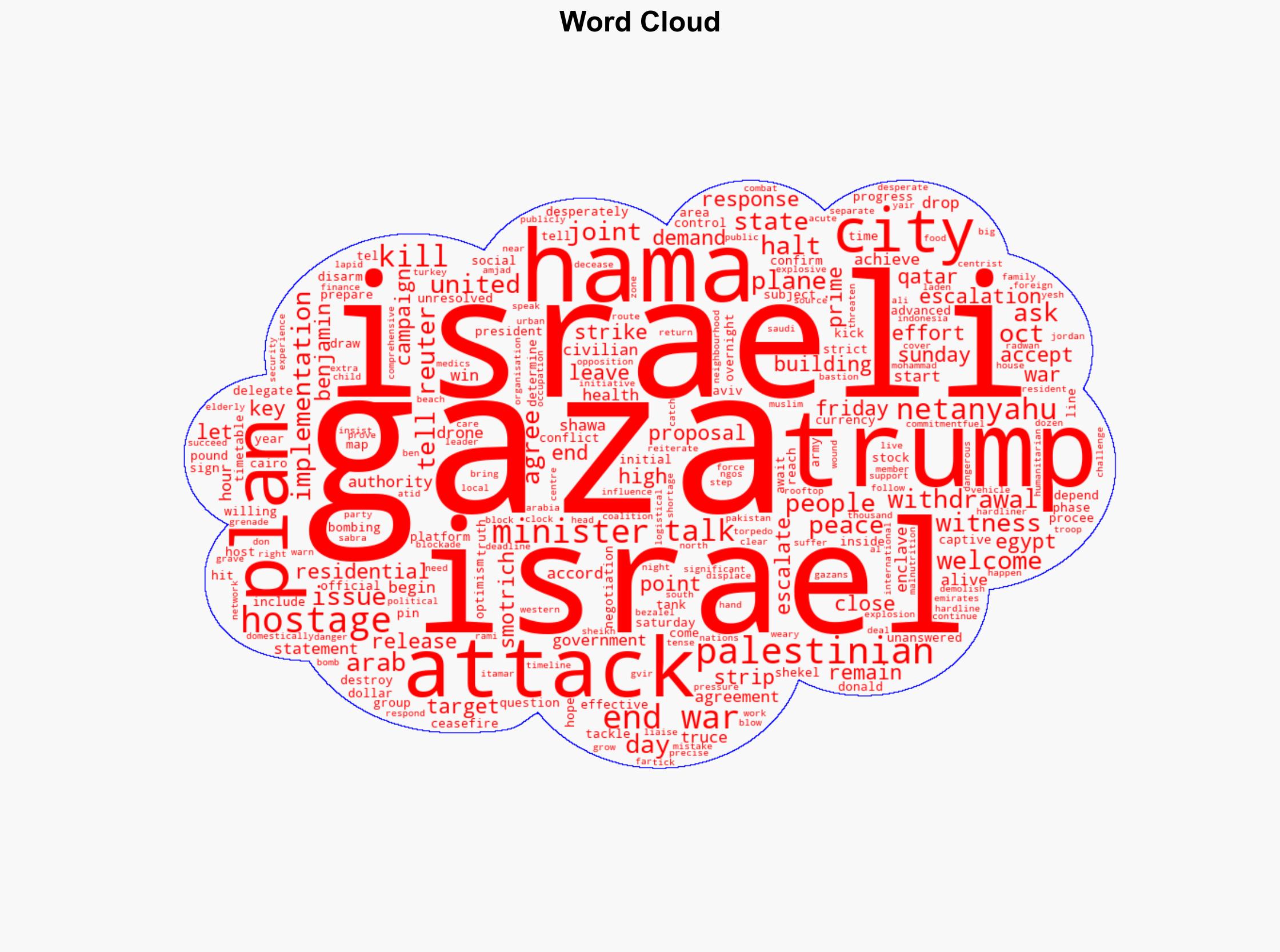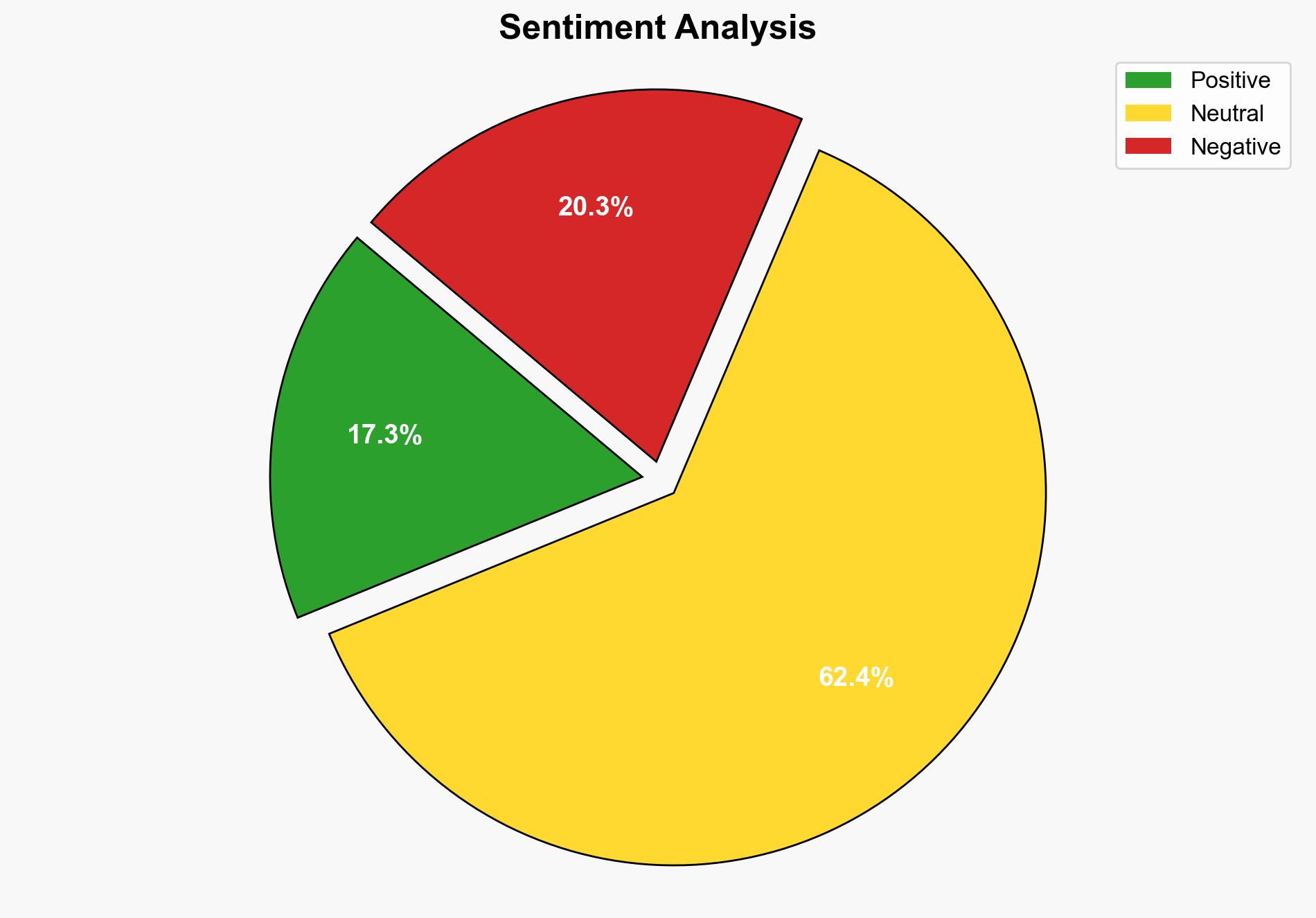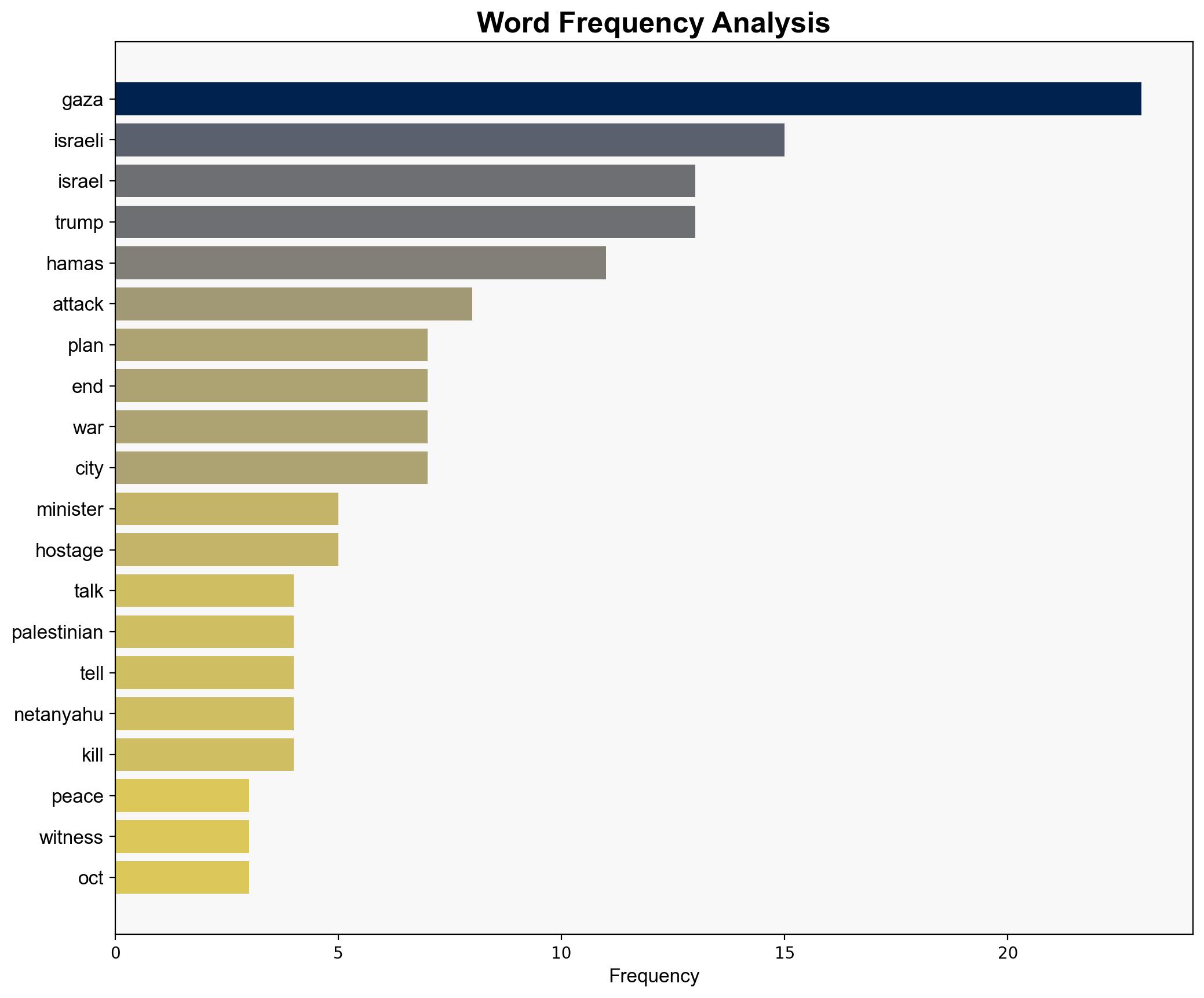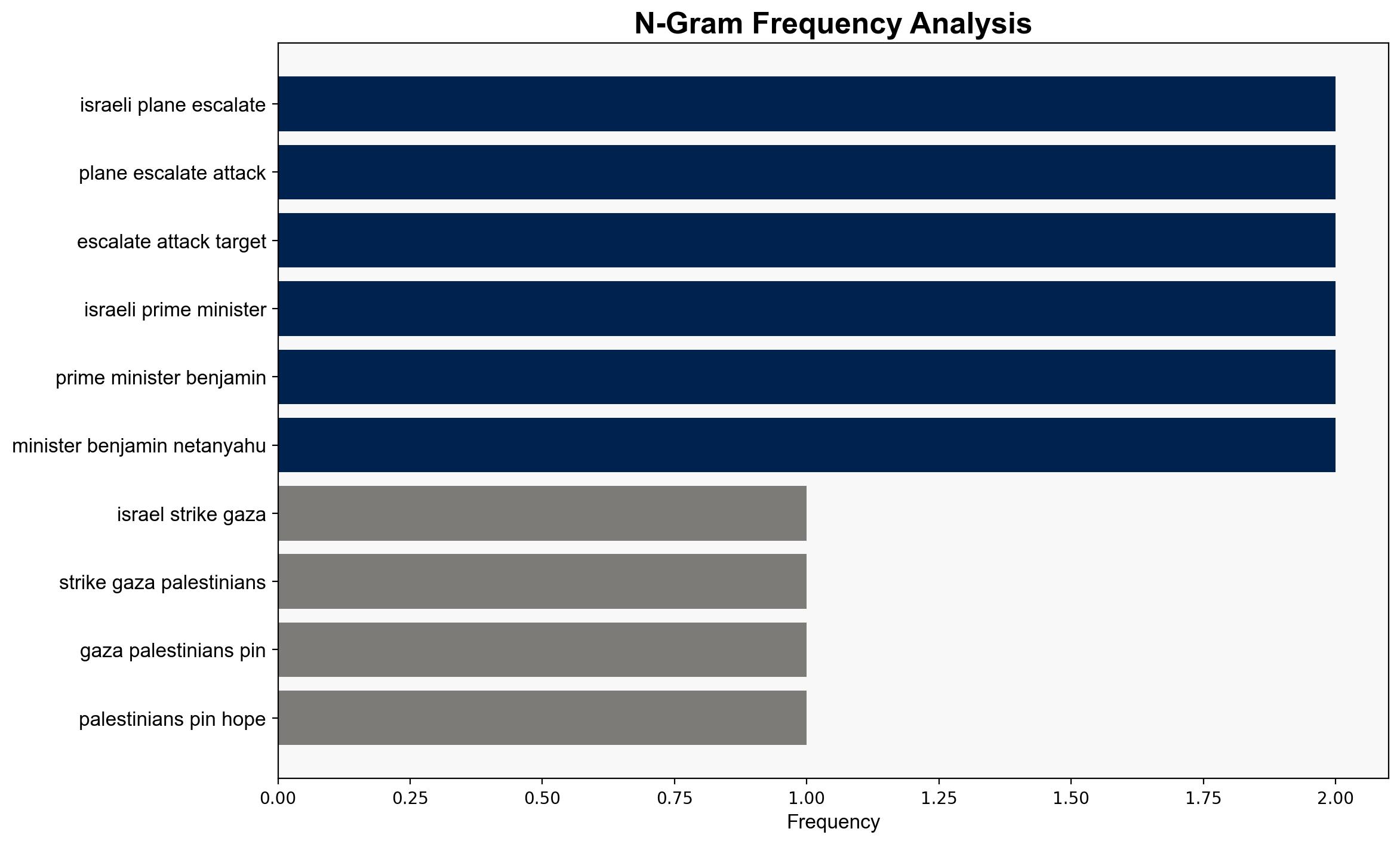Israel strikes Gaza as Palestinians pin hopes on Trump’s peace plan – CNA
Published on: 2025-10-05
Intelligence Report: Israel strikes Gaza as Palestinians pin hopes on Trump’s peace plan – CNA
1. BLUF (Bottom Line Up Front)
The most supported hypothesis is that the recent escalation in Gaza is a strategic maneuver by both Israel and Hamas to strengthen their negotiating positions ahead of peace talks facilitated by the United States. Confidence level is moderate due to the complexity of regional dynamics and the involvement of multiple stakeholders. Recommended action is to closely monitor the peace talks and prepare for potential shifts in regional alliances.
2. Competing Hypotheses
1. **Hypothesis 1**: The escalation in Gaza is a tactical move by Israel and Hamas to improve their bargaining positions in upcoming peace negotiations. This is supported by the timing of the attacks coinciding with diplomatic efforts and the involvement of key regional players like Egypt and Qatar.
2. **Hypothesis 2**: The escalation is a result of internal political pressures within Israel, where hardline elements are pushing for a more aggressive stance against Hamas, irrespective of the peace talks. This is indicated by domestic political dynamics and statements from influential Israeli politicians.
3. Key Assumptions and Red Flags
– **Assumptions**: It is assumed that both Israel and Hamas are rational actors seeking to maximize their strategic gains. There is also an assumption that the United States’ peace plan is a viable framework for conflict resolution.
– **Red Flags**: The lack of clear commitment from Hamas to disarm and the absence of a detailed timeline for Israeli withdrawal from Gaza are significant uncertainties. Additionally, the potential for misinformation or propaganda from either side could skew perceptions.
4. Implications and Strategic Risks
The ongoing conflict poses significant risks of regional destabilization, particularly if peace talks fail. Economic impacts could arise from prolonged conflict, affecting regional markets and international investments. There is also a risk of cyber operations targeting critical infrastructure as part of asymmetric warfare tactics. Geopolitically, failure to achieve peace could lead to realignment of regional alliances, with potential shifts in support from key Arab states.
5. Recommendations and Outlook
- Engage in diplomatic efforts to support the peace talks and encourage transparency in negotiations.
- Prepare contingency plans for potential escalation scenarios, including humanitarian aid and cybersecurity measures.
- Scenario-based projections:
- **Best Case**: Successful peace talks lead to a ceasefire and gradual stabilization in the region.
- **Worst Case**: Breakdown in negotiations results in intensified conflict and regional instability.
- **Most Likely**: Protracted negotiations with intermittent violence, requiring sustained diplomatic engagement.
6. Key Individuals and Entities
– Donald Trump: Former U.S. President, involved in proposing the peace plan.
– Benjamin Netanyahu: Israeli Prime Minister, facing internal political pressure.
– Bezalel Smotrich and Itamar Ben Gvir: Israeli politicians advocating for a hardline approach.
– Yair Lapid: Opposition leader in Israel, potentially influencing political dynamics.
– Amjad al Shawa: Head of Palestinian NGOs Network, highlighting humanitarian concerns.
7. Thematic Tags
national security threats, regional focus, geopolitical strategy, peace negotiations, Middle East conflict





